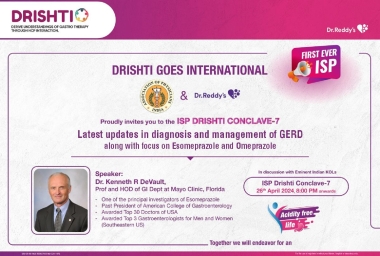test
test
test
test
test
test
test
test
test
test
Webinars
Videos
Courses
Medshorts

Analgesic effect of perineural and intravenous betamethasone following knee arthroplasty
According to a recent study, the use of perineural and intravenous betamethasone resulted in a heightened analgesic effect after knee arthroplasty. Moreover, it was linked to reduced levels of TNF-α, IL-1β, and HS-CRP, as well as improved knee range of motion (ROM), which may lead to early ambulation and postoperative rehabilitation subsequent to knee arthroplasty. This study’s findings were published in the journal, Orthopaedic surgery .
In this randomized, controlled study, a total of 159 patients undergoing knee arthroplasty were divided into three groups. The NS group was administered intravenous 3mL 0.9% normal saline and ropivacaine 0.375%, the PNB group received ropivacaine 0.375% along with intravenous 3mL 0.9% normal saline and perineural betamethasone (12mg) 3mL, while the IVB group was given intravenous betamethasone (12mg) 3mL and ropivacaine 0.375%.
Improved median (IQR) numeric rating scale (NRS) scores on the six meter walk test were observed in both the perineural and intravenous administration of betamethasone. The scores for both groups were 1.0 (1.0-2.0), while the NS group had a score of 2.0 (1.0-2.0). Both the IVB groups and PNB indicated significant reductions in NRS scores 24 and 36 hours following surgery when compared to the NS group. There was a significant increase in range of motion at 24, 36, and 48 hours post-operation in both the IVB and PNB groups. Also, the PNB and IVB groups presented lower levels of cytokine TNF-α and IL-1β in fluid samples, as well as a lower level of HS-CRP in blood samples, in comparison to the NS group.
Thus, it can be concluded that the administration of perineural and intravenous betamethasone following knee arthroplasty led to an enhanced analgesic outcome. Additionally, it was associated with decreased levels of TNF-α, IL-1β, and HS-CRP, along with improved knee ROM.

Analgesic effect of perineural and intravenous betamethasone following knee arthroplasty
According to a recent study, the use of perineural and intravenous betamethasone resulted in a heightened analgesic effect after knee arthroplasty. Moreover, it was linked to reduced levels of TNF-α, IL-1β, and HS-CRP, as well as improved knee range of motion (ROM), which may lead to early ambulation and postoperative rehabilitation subsequent to knee arthroplasty. This study’s findings were published in the journal, Orthopaedic surgery .
In this randomized, controlled study, a total of 159 patients undergoing knee arthroplasty were divided into three groups. The NS group was administered intravenous 3mL 0.9% normal saline and ropivacaine 0.375%, the PNB group received ropivacaine 0.375% along with intravenous 3mL 0.9% normal saline and perineural betamethasone (12mg) 3mL, while the IVB group was given intravenous betamethasone (12mg) 3mL and ropivacaine 0.375%.
Improved median (IQR) numeric rating scale (NRS) scores on the six meter walk test were observed in both the perineural and intravenous administration of betamethasone. The scores for both groups were 1.0 (1.0-2.0), while the NS group had a score of 2.0 (1.0-2.0). Both the IVB groups and PNB indicated significant reductions in NRS scores 24 and 36 hours following surgery when compared to the NS group. There was a significant increase in range of motion at 24, 36, and 48 hours post-operation in both the IVB and PNB groups. Also, the PNB and IVB groups presented lower levels of cytokine TNF-α and IL-1β in fluid samples, as well as a lower level of HS-CRP in blood samples, in comparison to the NS group.
Thus, it can be concluded that the administration of perineural and intravenous betamethasone following knee arthroplasty led to an enhanced analgesic outcome. Additionally, it was associated with decreased levels of TNF-α, IL-1β, and HS-CRP, along with improved knee ROM.


Analgesic effect of perineural and intravenous betamethasone following knee arthroplasty
According to a recent study, the use of perineural and intravenous betamethasone resulted in a heightened analgesic effect after knee arthroplasty. Moreover, it was linked to reduced levels of TNF-α, IL-1β, and HS-CRP, as well as improved knee range of motion (ROM), which may lead to early ambulation and postoperative rehabilitation subsequent to knee arthroplasty. This study’s findings were published in the journal, Orthopaedic surgery .
In this randomized, controlled study, a total of 159 patients undergoing knee arthroplasty were divided into three groups. The NS group was administered intravenous 3mL 0.9% normal saline and ropivacaine 0.375%, the PNB group received ropivacaine 0.375% along with intravenous 3mL 0.9% normal saline and perineural betamethasone (12mg) 3mL, while the IVB group was given intravenous betamethasone (12mg) 3mL and ropivacaine 0.375%.
Improved median (IQR) numeric rating scale (NRS) scores on the six meter walk test were observed in both the perineural and intravenous administration of betamethasone. The scores for both groups were 1.0 (1.0-2.0), while the NS group had a score of 2.0 (1.0-2.0). Both the IVB groups and PNB indicated significant reductions in NRS scores 24 and 36 hours following surgery when compared to the NS group. There was a significant increase in range of motion at 24, 36, and 48 hours post-operation in both the IVB and PNB groups. Also, the PNB and IVB groups presented lower levels of cytokine TNF-α and IL-1β in fluid samples, as well as a lower level of HS-CRP in blood samples, in comparison to the NS group.
Thus, it can be concluded that the administration of perineural and intravenous betamethasone following knee arthroplasty led to an enhanced analgesic outcome. Additionally, it was associated with decreased levels of TNF-α, IL-1β, and HS-CRP, along with improved knee ROM.

Effect of vitamin D3 supplementation in pregnancy on risk of autism and Attention Deficit Hyperactive Disorder
According to a recent study, maternal preintervention 25(OH)D (maternal 25-hydroxy-vitamin D) when given at a higher dose, decreased the risk of autism, decreased the risk of ADHD diagnosis, and lowered autistic symptom load. The conclusions of this study were published in the American Journal of Clinical Nutrition.
This randomized study was part of the COpenhagen Prospective Study on Neuro-PSYCHiatric Development (COPYCH) project and consisted of 700 healthy mother-child pairs who enrolled at the 24th week of pregnancy. 25(OH)D was measured at inclusion and 623 mothers underwent randomization to receive either the high-dose of 2800 IU/d (n=315) or standard dose of 400 IU/d (n=308) Vitamin D3 until one week after childbirth. At 10 years of age, diagnoses and symptom load of autism and ADHD, respectively was made utilizing the Kiddie-Schedule for Affective Disorders and Schizophrenia for School-Age Children-Present and Lifetime Version.
At the end of the study, it was seen from the psychopathologic evaluation that 591 (10-year old) children completed it. Out of this, 16 and 65 children were identified with autism and ADHD, respectively. A total of 496 children participated in the vitamin D3 trial (high-dose: 246; standard-dose: 250), out of which 12 and 58 children were identified with autism and ADHD, respectively.
Based on the above results, it can be concluded that higher levels of maternal preintervention 25(OH)D may be associated with a decreased risk of autism, lower autistic symptom load, and decreased risk of ADHD diagnosis. However, supplementation with high-dose vitamin D3 may not be associated with the risk of autism and ADHD.

Effect of vitamin D3 supplementation in pregnancy on risk of autism and Attention Deficit Hyperactive Disorder
According to a recent study, maternal preintervention 25(OH)D (maternal 25-hydroxy-vitamin D) when given at a higher dose, decreased the risk of autism, decreased the risk of ADHD diagnosis, and lowered autistic symptom load. The conclusions of this study were published in the American Journal of Clinical Nutrition.
This randomized study was part of the COpenhagen Prospective Study on Neuro-PSYCHiatric Development (COPYCH) project and consisted of 700 healthy mother-child pairs who enrolled at the 24th week of pregnancy. 25(OH)D was measured at inclusion and 623 mothers underwent randomization to receive either the high-dose of 2800 IU/d (n=315) or standard dose of 400 IU/d (n=308) Vitamin D3 until one week after childbirth. At 10 years of age, diagnoses and symptom load of autism and ADHD, respectively was made utilizing the Kiddie-Schedule for Affective Disorders and Schizophrenia for School-Age Children-Present and Lifetime Version.
At the end of the study, it was seen from the psychopathologic evaluation that 591 (10-year old) children completed it. Out of this, 16 and 65 children were identified with autism and ADHD, respectively. A total of 496 children participated in the vitamin D3 trial (high-dose: 246; standard-dose: 250), out of which 12 and 58 children were identified with autism and ADHD, respectively.
Based on the above results, it can be concluded that higher levels of maternal preintervention 25(OH)D may be associated with a decreased risk of autism, lower autistic symptom load, and decreased risk of ADHD diagnosis. However, supplementation with high-dose vitamin D3 may not be associated with the risk of autism and ADHD.


Effect of vitamin D3 supplementation in pregnancy on risk of autism and Attention Deficit Hyperactive Disorder
According to a recent study, maternal preintervention 25(OH)D (maternal 25-hydroxy-vitamin D) when given at a higher dose, decreased the risk of autism, decreased the risk of ADHD diagnosis, and lowered autistic symptom load. The conclusions of this study were published in the American Journal of Clinical Nutrition.
This randomized study was part of the COpenhagen Prospective Study on Neuro-PSYCHiatric Development (COPYCH) project and consisted of 700 healthy mother-child pairs who enrolled at the 24th week of pregnancy. 25(OH)D was measured at inclusion and 623 mothers underwent randomization to receive either the high-dose of 2800 IU/d (n=315) or standard dose of 400 IU/d (n=308) Vitamin D3 until one week after childbirth. At 10 years of age, diagnoses and symptom load of autism and ADHD, respectively was made utilizing the Kiddie-Schedule for Affective Disorders and Schizophrenia for School-Age Children-Present and Lifetime Version.
At the end of the study, it was seen from the psychopathologic evaluation that 591 (10-year old) children completed it. Out of this, 16 and 65 children were identified with autism and ADHD, respectively. A total of 496 children participated in the vitamin D3 trial (high-dose: 246; standard-dose: 250), out of which 12 and 58 children were identified with autism and ADHD, respectively.
Based on the above results, it can be concluded that higher levels of maternal preintervention 25(OH)D may be associated with a decreased risk of autism, lower autistic symptom load, and decreased risk of ADHD diagnosis. However, supplementation with high-dose vitamin D3 may not be associated with the risk of autism and ADHD.

Effect of early vitamin D supplementation on the occurrence of preeclampsia in primigravid women
A recent study found that administration of a monthly dose (60,000 IU) of vitamin D supplementation during the early stages of pregnancy demonstrated a notable decrease in the occurrence of preeclampsia. The study results were published in the journal, BMC pregnancy and childbirth.
This randomised clinical trial included 1300 primigravid women (median maternal age: 21 years; the median gestational age: 15 weeks) who were randomly assigned in a 1:1 ratio to either the supplemented (A) or control (B) group. Pregnant women in group A received a monthly dose of cholecalciferol (60,000 IU) orally for 6 months during antenatal care, while the control group (B) did not receive any vitamin D supplementation or placebo. Serum 25(OH)D levels were checked at the beginning and at 34 weeks of gestation, with outcomes assessed monthly until delivery.
In the intervention group, there was a significant decrease in the risk of preeclampsia (RR = 0.36) and preterm delivery (RR = 0.5). Moreover, an RR of 0.43 was identified for low birth weight and the RR for caesarean section was 0.63. The supplemented group demonstrated significantly higher APGAR scores at the 5th minute and a larger size of newborns.
The above results demonstrate that a single monthly dosage of vitamin D supplementation in early pregnancy had a substantial impact on lowering the occurrence of preeclampsia, as well as mitigating the associated complications experienced by both the mother and the fetus.

Effect of early vitamin D supplementation on the occurrence of preeclampsia in primigravid women
A recent study found that administration of a monthly dose (60,000 IU) of vitamin D supplementation during the early stages of pregnancy demonstrated a notable decrease in the occurrence of preeclampsia. The study results were published in the journal, BMC pregnancy and childbirth.
This randomised clinical trial included 1300 primigravid women (median maternal age: 21 years; the median gestational age: 15 weeks) who were randomly assigned in a 1:1 ratio to either the supplemented (A) or control (B) group. Pregnant women in group A received a monthly dose of cholecalciferol (60,000 IU) orally for 6 months during antenatal care, while the control group (B) did not receive any vitamin D supplementation or placebo. Serum 25(OH)D levels were checked at the beginning and at 34 weeks of gestation, with outcomes assessed monthly until delivery.
In the intervention group, there was a significant decrease in the risk of preeclampsia (RR = 0.36) and preterm delivery (RR = 0.5). Moreover, an RR of 0.43 was identified for low birth weight and the RR for caesarean section was 0.63. The supplemented group demonstrated significantly higher APGAR scores at the 5th minute and a larger size of newborns.
The above results demonstrate that a single monthly dosage of vitamin D supplementation in early pregnancy had a substantial impact on lowering the occurrence of preeclampsia, as well as mitigating the associated complications experienced by both the mother and the fetus.


Effect of early vitamin D supplementation on the occurrence of preeclampsia in primigravid women
A recent study found that administration of a monthly dose (60,000 IU) of vitamin D supplementation during the early stages of pregnancy demonstrated a notable decrease in the occurrence of preeclampsia. The study results were published in the journal, BMC pregnancy and childbirth.
This randomised clinical trial included 1300 primigravid women (median maternal age: 21 years; the median gestational age: 15 weeks) who were randomly assigned in a 1:1 ratio to either the supplemented (A) or control (B) group. Pregnant women in group A received a monthly dose of cholecalciferol (60,000 IU) orally for 6 months during antenatal care, while the control group (B) did not receive any vitamin D supplementation or placebo. Serum 25(OH)D levels were checked at the beginning and at 34 weeks of gestation, with outcomes assessed monthly until delivery.
In the intervention group, there was a significant decrease in the risk of preeclampsia (RR = 0.36) and preterm delivery (RR = 0.5). Moreover, an RR of 0.43 was identified for low birth weight and the RR for caesarean section was 0.63. The supplemented group demonstrated significantly higher APGAR scores at the 5th minute and a larger size of newborns.
The above results demonstrate that a single monthly dosage of vitamin D supplementation in early pregnancy had a substantial impact on lowering the occurrence of preeclampsia, as well as mitigating the associated complications experienced by both the mother and the fetus.













































